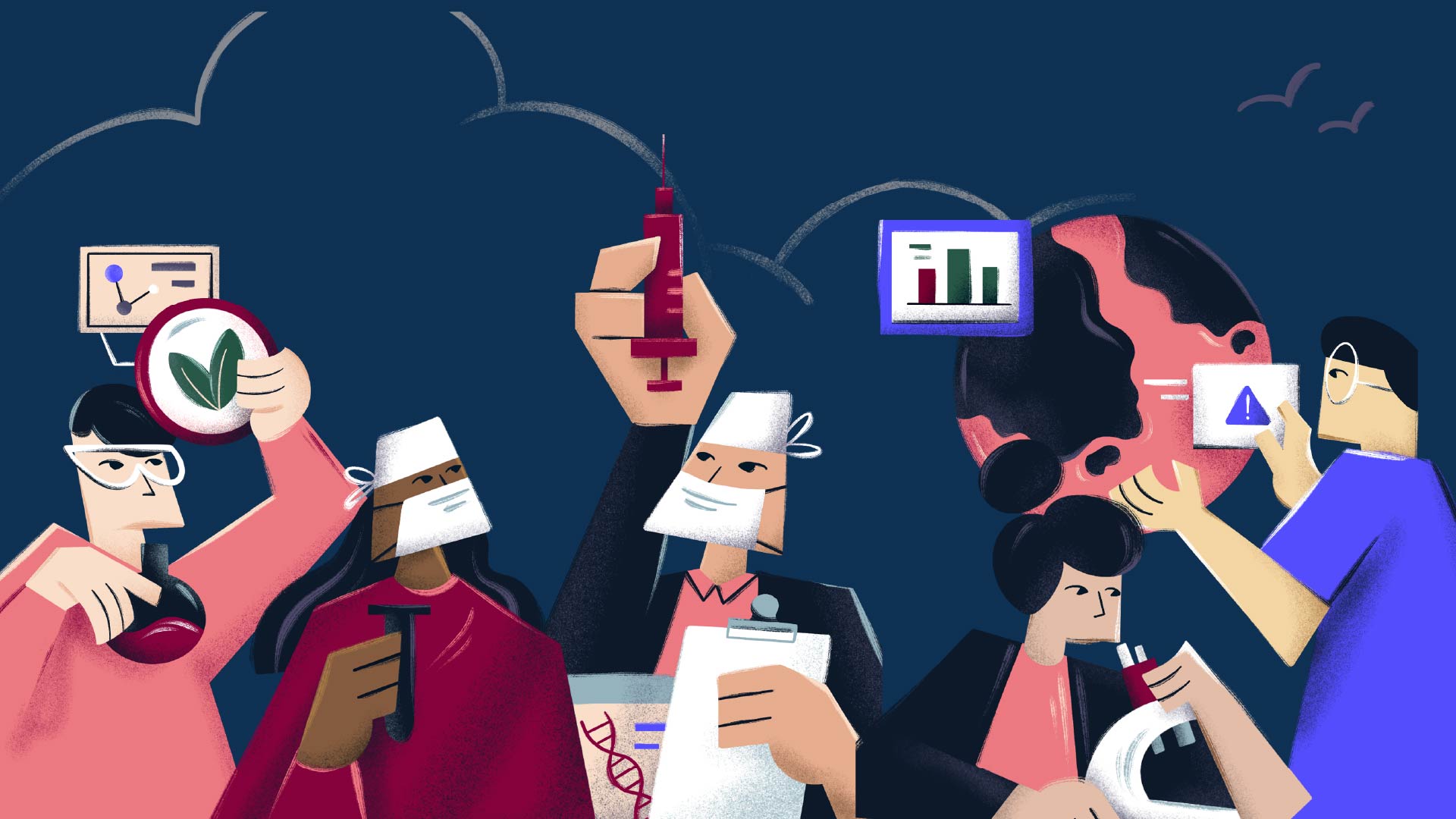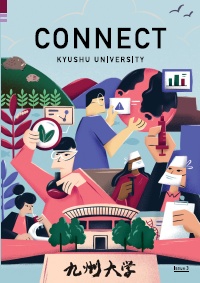
On the cutting edge: Medicine and health
Advancing the treatment and understanding of the human body
Kyushu University traces its origins to 1867 when the Sanseikan, a school for Western medicine, was established in the then-‘Fukuoka domain.’ Eventually, the school became affiliated with the prefectural hospital, and was officially chartered as Kyushu Imperial University in 1911.
Through the years, the university has been at the forefront of medical care and research in Japan. Its connections with the local community are a cornerstone of ongoing cohort studies, providing a deeper understanding into the long-term health of individuals and communities. But further research into human health requires a fundamental understanding of how the body—and biology—works. For this reason, basic medical research has always been a key tenet of the university.
Today, Kyushu University plays a critical role in advancing the treatment and understanding of the human body. With investments in telemedicine, omics, and precision medicine, researchers and stakeholders alike are excited to see what the future holds.
The massive impact of the micro-world
In the field of micro- and nanodevices, everything is—by any measure—impossible to see, but Yoko Yamanishi’s work in the micro-world has had significant repercussions across everything from medicine to engineering.
Lined up on her desk are a series of what looks like injectors—what she calls the ‘fusion of biology and mechanics.’
“All of these devices were developed to dispense microbubbles at incredibly high speeds. While it may sound benign, these bubbles act very peculiarly in the micro-environment,” explained Yamanishi. “Depending on the bubbles’ speed, they can act almost like a knife—carving a very small hole into the surface of individual cells, essentially becoming a needleless injector.”
For researchers who need to inject small molecules like DNA or proteins into specific cells without damage, such a technology could prove incredibly useful. With enough power, the bubbles can even penetrate the hardened cell walls of plants. On the other hand, if power is reduced, the bubbles can act as a microscopic, localized hammer.
“We are testing how these low-power bubbles can dislodge blood clots in small blood vessels like those found in the eye,” said Yamanishi. “Through our investigation, we also found that at a high enough power, these injectors produce microscopic plasma arcs. We are now exploring ways to apply this discovery in the micro-scale etching of chips and organic surfaces.”
Preventive medicine, 60 years in the making
About 12 kilometers northeast of downtown Fukuoka, is the town of Hisayama. Since 1961, Kyushu University has conducted a prospective cohort study with Hisayama’s residents, periodically studying their lifestyle to evaluate—and perhaps predict—their future health.
Today, Toshiharu Ninomiya heads the program, which intends to help people model their future wellbeing using data and evidence 60 years in the making.
“This cohort study began by looking at the causes of stroke. Over the years, we added studies into diabetes and, more recently, dementia. Thanks to technological advancements, we can collect more data including a patient’s genetic profile and key biomarkers,” explained Ninomiya.
“We hope to build a healthier community by implementing evidence-based policies and applying data generated through the collaborative efforts of the university, the Hisayama community, and the local medical establishment.”
To identify early dementia markers, eight other locations across Japan are being studied using the knowhow and protocols from Hisayama.
“You need to be patient with cohort studies. The results we put out now come from data collected 10 to 20 years ago. In turn, the data we collect today will only become valuable in the upcoming decades. This is why training the next generation of doctors and researchers is important,” continued Ninomiya.
“Ultimately, the Hisayama study helps us visualize an individual’s health and predict long-term outcomes. As we establish the fundamentals of ‘preventive medicine,’ perhaps we can build a future where we can prevent illnesses before they even happen.”
The transformative world of transomics
The ‘central dogma of molecular biology’ describes the flow of genetic information from DNA to RNA and finally to the proteins that are essential for life. While conceptually straightforward, real-world biological systems are absurdly complex.
Hiroyuki Kubota hopes to unify these systems by mathematically deconstructing the central dogma, level by level. His research forms part of an emerging field known as ‘transomics.’
“Research fields that study each ‘layer’ of the central dogma—genomics, transcriptomics, proteomics, and metabolomics—seek to understand how each system functions and affects each other,” explained Kubota. “You can spend your entire career looking only at a few molecules or genes. But in biology, you need to see the forest and not just the trees.”
Such a feat would require tremendous amounts of experimentation and data, noted Kubota. “But as more data is analyzed, we start to see how certain molecules affect different pathways and vice versa,” he added.
Eventually, he hopes that whole disease pathways can be mapped out and simulated, allowing the discovery of new treatments and possible side effects. Looking forward, such insights may be applied in individualized medical treatments.
“We need more time and resources to experiment,” says Kubota. “As this is such a multidisciplinary field, the more people, ideas, and collaborations we have, the better we become.”
“We are just scratching the surface of this field. Thankfully, Kyushu University has many prominent researchers who are willing to collaborate,” Isobe concluded.
This article first appeared in issue 3 of Connect, Kyushu University's English-language magazine. View other articles online, download a PDF (4.5 MB) of the full issue, or browse previous issues to learn about more exciting things happening at Kyushu U.
































